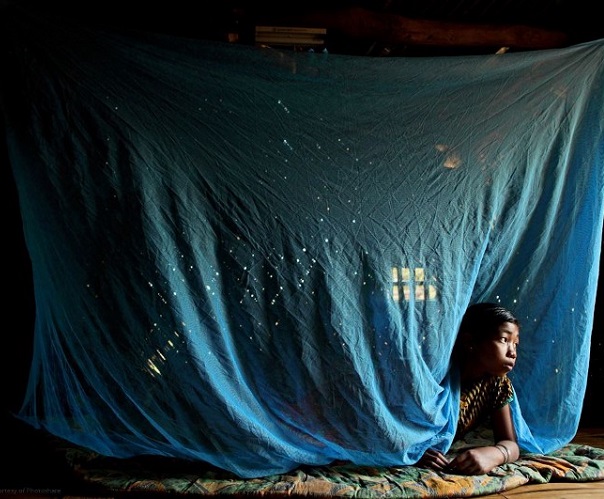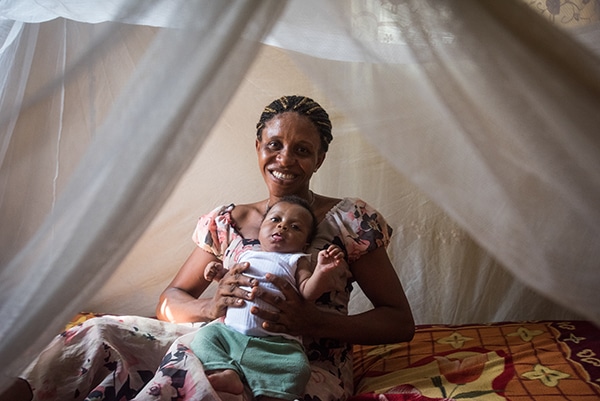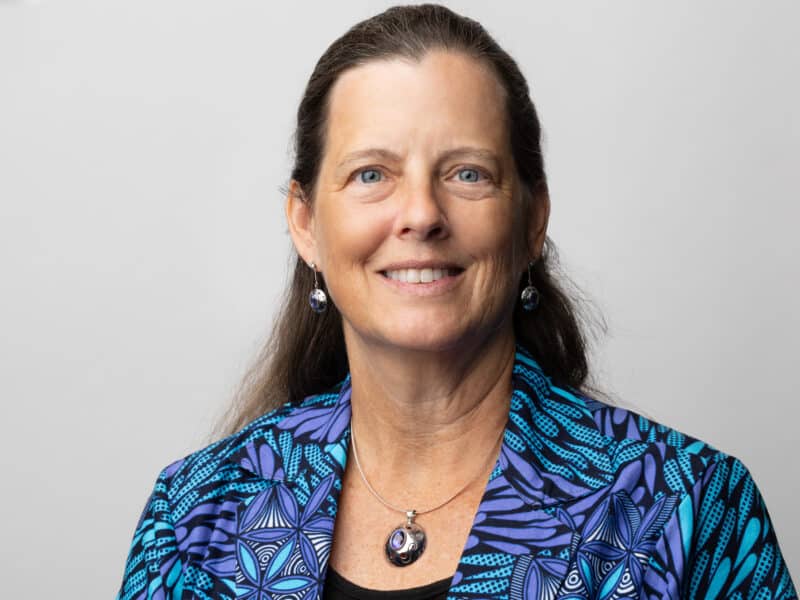The Roll Back Malaria (RBM) partnership, founded in 1998, plays a key role in various aspects of malaria control, prevention, and advocacy. We sat down with Matthew Lynch, CCP’s malaria technical director, to talk about how RBM’s transformation over the years reflects the field’s evolving priorities. Dr. Lynch was on the RBM board for a decade; he served as vice chair and remains an active member of several RBM technical working groups.
This interview originally appeared on Medium.
1998 – 2001: A Focus on Coordination and Rapid Response
The RBM partnership was launched in 1998 by four organizations: World Health Organization, UNICEF, United Nations Development Programme (UNDP) and the World Bank. The idea [behind the RBM partnership] was to try and coordinate a response to what was, at that point, a very worrisome increase in deaths due to malaria. Since the abandonment of the first malaria global eradication program in the 1970s, indoor residual spray coverage had declined drastically and basically the world had gone to depending on cheap chloroquine to prevent and treat malaria. And for a while it worked. Then in the late 1980s and 1990s, we started to see death rates increase radically. And most of that increase was in children under five in West and East Africa.
By 1998, about a million kids a year were dying from malaria. And though it wasn’t widely articulated at the time, it was because of a murderous combination of lack of access to treatment combined with resistance to chloroquine, which made getting chloroquine equivalent to getting no treatment at all. The chloroquine just wasn’t working anymore. It became enough of an issue that world organizations decided something had to be done. So they formed Roll Back Malaria partnership, which consisted of a board, secretariat, four sub-regional networks, and a series of technical working groups.
About that time, USAID started to put more money into malaria. But even so, it was pretty small amounts of money, and we were looking at investment in maybe four, five focus districts in a country like Zambia. Then the Global Fund came on in about 2002 and suddenly you started to have serious funding. For example, if Zambia’s malaria aid budget was about 4 million from USAID, it went up to 59 million from the Global Fund. So suddenly, you could start thinking about national responses and really scaling up to address malaria.
2002-2007: Building Consensus and Building National Strategies
In those days, we had a few countries where the national strategy was essentially chloroquine and cutting grass. I sat in a meeting where one of the very senior professors from the medical school told me: “We will never give up chloroquine, we have a sentimental attachment to it. It’s what our mothers gave us.” But it wasn’t working anymore! So what do you say? Where you go from there?
And so there was a real struggle to get countries to move off of chloroquine to something more effective. But it wasn’t just the sentimental attachment that was holding back the switch. Global policy had not been changed, and countries were waiting for official guidance from WHO, which finally arrived in late 2003. The new drugs were going to cost far more (up to 40 times more) than chloroquine. The ministries of health were saying, how can we increase our spending on malaria drugs by 10 or 20 times the current amount? Where will that money come from?
So it wasn’t until the Global Fund became a major source of funding, as countries decided they could trust that the Global Fund was going to be there for a while, then we started seeing change. And while the RBM partnership also took some time to adapt, after a restructuring in 2005 it really played a huge role in getting people out to countries to hold meetings with the Ministry of Health officials and convince them that they really needed to make this change.
A few countries started early to switch drug strategies. Malawi was one of the first, and they took a lot of heat. But eventually the momentum grew and we were able to get more countries to change. And then it was one of the classic behavior change adoption curves.
Initially, we started with distributing bed nets to biologically vulnerable populations – pregnant women and infants, who have reduced natural immunity to malaria. There was a lot of advocacy around the limitations of this strategy: that it wasn’t going to be enough. We weren’t really going to address the problem unless we could get bed nets out to everyone and start killing the mosquito population. But many people, myself among them, said, where is that money going to come from? You’re dreaming. There’s no way we can get enough money to provide bed nets to every household in Africa.
2007-present: Achieving Elimination through Strategic Resource Allocation
In 2007, at the Gates Foundation Malaria Forum in Seattle, Melinda Gates gave a speech in which she announced that malaria elimination was now the global goal. And she had Bill [Gates] and Margaret Chan from WHO up there and several other people, and you could just see – it was sort of like the wave at Orioles stadium – you could see the cringe go through the room at the word “elimination.” Because we technical people were always forbidden to use the “e-word”: it was impossible, it was just never going to happen.
And yet she was right. It was time to make that call. We had unprecedented funding now flowing through the Global Fund, we had technical tools that were actually pretty good and were doing well, and it was time to up the game and be more aggressive. In 2008 the Secretary General pronounced that universal coverage was the global goal. It did happen, and despite some resistance, the SG’s message was adopted by the global malaria community particularly because the African Union had immediately endorsed his call.
Great progress has been made: by 2015 mortality rates in the Africa Region had dropped by 66% since 2000, and by 71% in children under 5. Fifty-seven countries had reduced malaria cases by at least 75% since 2000. RBM and the partners have much to be proud of. But even this progress is not enough to get us to our goal.
We realized that the RBM structures were good at creating consensus, they were good at getting stakeholder engagement, but they were not going to take us to elimination. They were not capable of mobilizing the resources that were going to be needed to reach elimination on a global level.
So, once again, the Partnership needed to change. We needed to create new structures that would be more focused, powerful and fast moving. At this point in time, we’re moving away from a standard UN-type partnership to one that gives prominence to affected countries and includes private sector as equals– something that is intended to be focused and speedy, with emphasis on effective operation.
Clearly, we see the need for resource mobilization. “Resources” doesn’t necessarily mean just money. We do need a lot more money [to achieve elimination]. We need three times what we’ve got now and we’re up to around $2.5 billion for malaria control, which is already much higher than anything we’ve seen before.
But more than money, we need the multisectoral collaboration. We need the ministry of agriculture to be thinking of malaria when they’re designing irrigation systems. We need the ministry of roads to be looking at roadside drainage more carefully. We need programs to look at urban housing.
Economies in Africa have had very strong growth rates and there’s a lot of people building new houses to live in. There are real opportunities to leverage that personal household investment to build a mosquito proof house. It’s not that hard to add window screens and other things to reduce the mosquito-human contact that would really make a difference in reducing transmission.
So a lot of that additional $3-4 billion in investment is not necessarily in checks, but in making sure we’re collaborating with sectors like housing and agriculture to reduce some of the factors that keep malaria going. A lot of it is allocation as well as mobilization.
WHO retains its role as being the agency that gives technical guidance – what chemicals should you be using, what size the mesh should be in the nets. That’s what WHO needs to continue to do. Now how things get rolled out – what is the most effective way to ensure mosquito nets arrive consistently in households in rural areas – is an operational issue that’s very context dependent and doesn’t lend itself to global pronouncements. And that’s very much the kind of thing that the RBM partnership should be working on with a lot of in-country investment in those technical and informational resources by the countries themselves as well as by partner entities
At the moment we’re using some tools in some very blunt ways. Do we need to be distributing bed nets to every sleeping space in an urban area where transmission is very low? Probably not. There are probably other ways you could protect those people from dying of malaria and use the money for those bed nets more efficiently. But we need that country level buy-in. We need more people at the district level who understand the dynamics, who can allocate resources to fit their specific context.
So I think that’s going to be the next big challenge. How do we move this allocation of technical knowledge to the district level? That’s a heavy lift. And it really is dependent on countries stepping up to allocate those resources.





